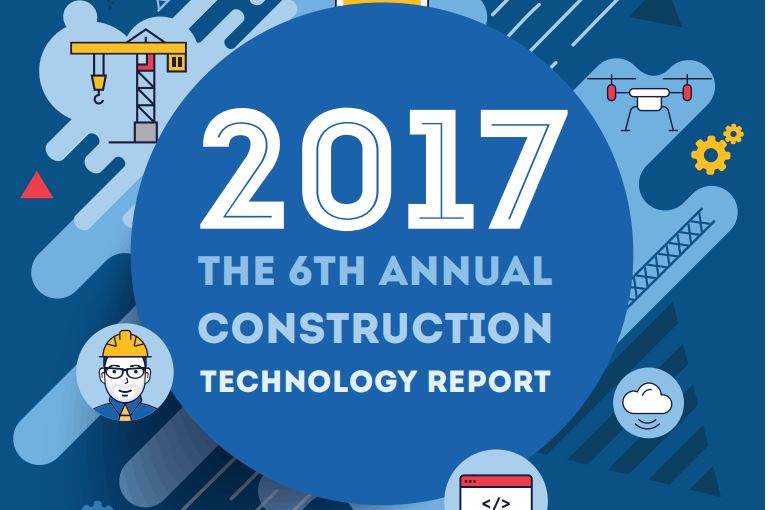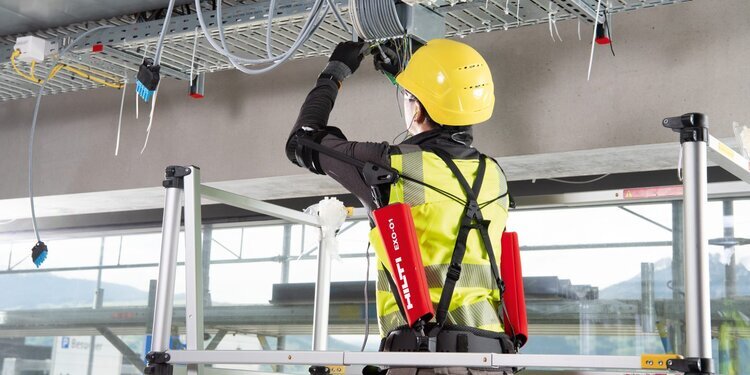JBKnowledge
The construction industry has been notoriously slow to adopt new technology, so much so that we’re probably –and sadly- keeping the fax machine industry afloat single-handedly. Heck, half of you are probably reading this article on a computer still using Windows 2000. I kid. However, Silicon Valley has recently zeroed in on the construction world, because they’ve realized it’s one of the least tapped into markets on the planet and there are billions of dollars up for grabs. That’s not a bad thing, either.
JBKnowledge, a construction technology company responsible for software such as SmartBid, SmartReality, and SmartCompliance, has been leading the charge on one of the most in-depth construction technology surveys since 2012. Now in its 6th year, the Annual Construction Technology Report gives the industry insights into how construction companies are currently utilizing technology and their overall feelings towards adoption of new tech.
The amount of survey participants has continued to grow each year and 2017 amassed 2,690 total respondents, up from 2,604 in 2016. The vast majority of the respondents were general contractors and subcontractors (72.7%) and most work within the “General Building-Commercial” or “Industrial” category. Most of the subcontractors were from the mechanical, HVAC, plumbing, sheet metal, and electrical trades.
The individual respondents were largely made up of estimators, project managers, executives, finance/accounting professionals, and construction IT professionals. Over 50% of the participants were born between 1960 and 1979 and over 25% were born in 1980 or later.
Below is a recap of what I think are the biggest takeaways from the report. As always, we encourage you to download the report to view all of the great information the JBKnowledge team has put together. You can download the 2017 Construction Technology Report for free by clicking here.
Mobile Devices
It was interesting to see how the ownership and use of mobile devices has changed since 2013, as was highlighted in this year’s report. In 2013, 79.2% of respondents used a laptop for work, 52.2% used a tablet, and 52.2% used a smartphone. In 2017, laptop use dropped slightly to 78.4%, tablet use increased to 57%, smartphone use jumped to 85.9%, and wearable devices and drones appeared on the list. Drones have become a favorite for site documentation and have even been used for infrastructure inspections, project progress tracking, and on-site stockpile size calculations recently.
The perception of the importance of mobile capabilities has also changed dramatically. In 2012, 41.4% of respondents said that it was not very important to have mobile capabilities in construction. This year, 40.4% said mobile is very important and another 42.47% said it is important.
Apple iOS is still the most popular mobile operating system in use, although Windows and Android also showed increased in amount of use. In the past, there were many construction apps that started out only being available on iOS. That has tapered off and most are also available on Android now.
Mobile Apps
The top 5 uses for software that offers mobile apps were:
- Project Management
- Accounting
- CAD/BIM
- Client Relationship Management (CRM)
- Project Scheduling
Construction applications saw a big shift into integration this year, with several major players opening up app marketplaces, like Procore, Bluebeam, PlanGrid, and Autodesk’s BIM 360. The marketplaces seamlessly integrate secondary applications, into one platform, which reduces redundancy and the manual transfer of data. As those leaders in software start to separate themselves, it should be no surprise that Procore, Bluebeam, and PlanGrid were listed as the top 3 mobile apps that construction companies are using.
Estimating Software
While many companies are still relying heavily on manual spreadsheets for estimating purposes, those who responded that they use an estimating software reported that 17.5% used Sage, 13% used Timble’s AccuBid, 11.5% use QuickPen, and 11.1% use a custom in-house software.
Project Scheduling
This is probably the only technology category to have 2 clear frontrunners, but Microsoft Project and Primavera P6 continue to be the most widely used programs for project scheduling. Asta Powerproject and Sychro Scheduler did see an increase in their users, which JBKnowledge attributes to their ability to tie their schedules into BIM.
Project Management
Procore made big moves this year to become the most used project management software by the respondents, taking over the top spot from Viewpoint. Sage, Custom In-House Software, and CMiC were numbers 3, 4, and 5 in the rankings this year.
Overall State of Technology in Construction
Even though solutions are becoming more prevalent, significant challenges still remain in the industry for adopting new technology solutions. Survey participants noted that lack of IT staff, budgets, employee/management reluctance, and lack of IT experience were some of the most limiting factors in trying new tech. Respondents over the past 3 years have reported a growing research and development budget for their company, but 54.4% of companies still do not have any type of budge to research new tech.
For those companies that are adopting new products and processes, 37.8% are trying drones, 19.9% pre-fabrication/modularization, 19.7% 360 Degree Photo/Video, 14.7% 3D Scanners, and 13% Smart Tools (like Milwaukee’s ONE-KEY and DeWalt’s Tool Connect).
Conclusion
I firmly believe that the companies that are making efforts now to embrace technology are in far better shape than those who are still only utilizing manual processes. The efficiency and data driven analysis gained by many of the products available today far outweigh the potential headaches from the initial adoption process. The development of sensors and other data automation devices will give companies far greater objectivity in their decision making processes going forward, potentially leading to better estimates and higher quality products than their competition.
As mentioned above, I highly recommend that you download the JBKnowledge 2017 Construction Technology Report. If you’re in the position to do so, we also encourage you to participate in next year’s survey. The more participants involved will only help the industry gain valuable insights.











In the midst of fierce discourse over the bipartisan infrastructure bill lies a unique opportunity for the United States.